World of Warcraft Classic is more than nostalgia fodder
But wearing rose-tinted glasses still helps.
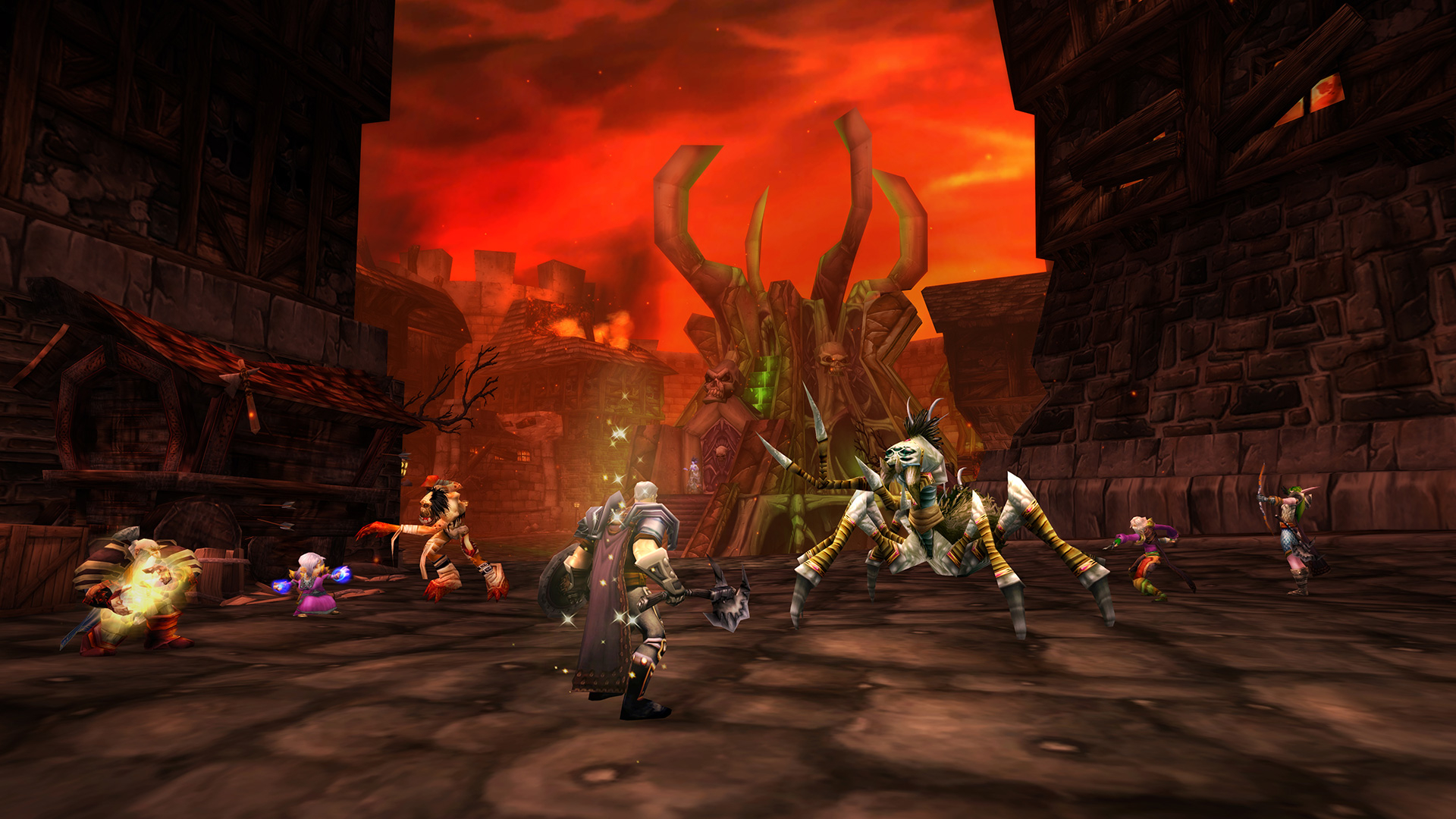
Zarwulf, an orc hunter with a gormless expression and a scruffy burgundy mop, was the first character I invested any meaningful time with in World of Warcraft. This was a time when getting a cool mid-level axe felt like a monumental achievement. It was absolutely worth skipping a day of lectures to get the Ravager; I'd do it again today. But then I moved onto other characters, and when I finally returned to my old pal, he was gone, at least the one I remembered. Warlords of Draenor had arrived, transforming his appearance, while years of expansions and updates had overhauled the entire class.
Last week, I resurrected Zarwulf in World of Warcraft Classic. The boy was back. Without his Ravager, lamentably, but only time constraints were stopping me from rearming him. The first thing I had to do, of course, was make the pilgrimage to the Crossroads. The walk from Orgrimmar was long and uneventful, aside from a spot of zhevra hunting. I had a hungry wolf to feed. It was a saunter, accompanied by Barrens chat stalwartly refusing to leave the old days behind. From there I turned to Ratchet, hung out with pirates, hopped on a ship and visited the Eastern Kingdoms for the first time, again.
World of Warcraft now encompasses multiple worlds and eras, but Classic makes Kalimdor and the Eastern Kingdoms feel huge. There's a lot more empty space, long journeys and the absence of modern conveniences. If you want to fly, for instance, you'll need to take public transport along predetermined routes. And where Battle for Azeroth flings systems and distractions at you with every step, Classic spreads everything out, making it less thrilling but also taking away a lot of pressure.

"It's more focused on these spaces of time where you can think about what your next move is going to be," says lead software engineer Brian Birmingham. "You're engaging in one-one-one combat, and it feels different—more of a relaxed pace. I usually find that as I'm killing one creature at a time, I'm still thinking about what I'll do after this. There's another quest coming up over here, and I see something off in the distance I want to get, and I see someone patrolling in the background, so I'm always thinking three steps ahead and planning my next move."
People are going to come for the nostalgia, but they're going to stay for the rediscovery
Patrick Dawson, production director
I never really noticed how few breaks the modern game offers—but when you're being dragged along or being pulled in 20 different directions, there isn't much time to stop and think, or even just take a pleasant stroll through Stranglethorn Vale during a rainstorm. In Classic, it's comfortingly dull.
It was during the aforementioned rainstorm that I got lost, meandering through ancient ruins. I should be able to draw the world with my eyes closed by now, but I've clearly forgotten a lot about the vanilla version. And there are no handy quest markers to do all the heavy lifting. It's perhaps for the best that quest text unfurls so slowly, as it's the only help you'll get, at least from the game.
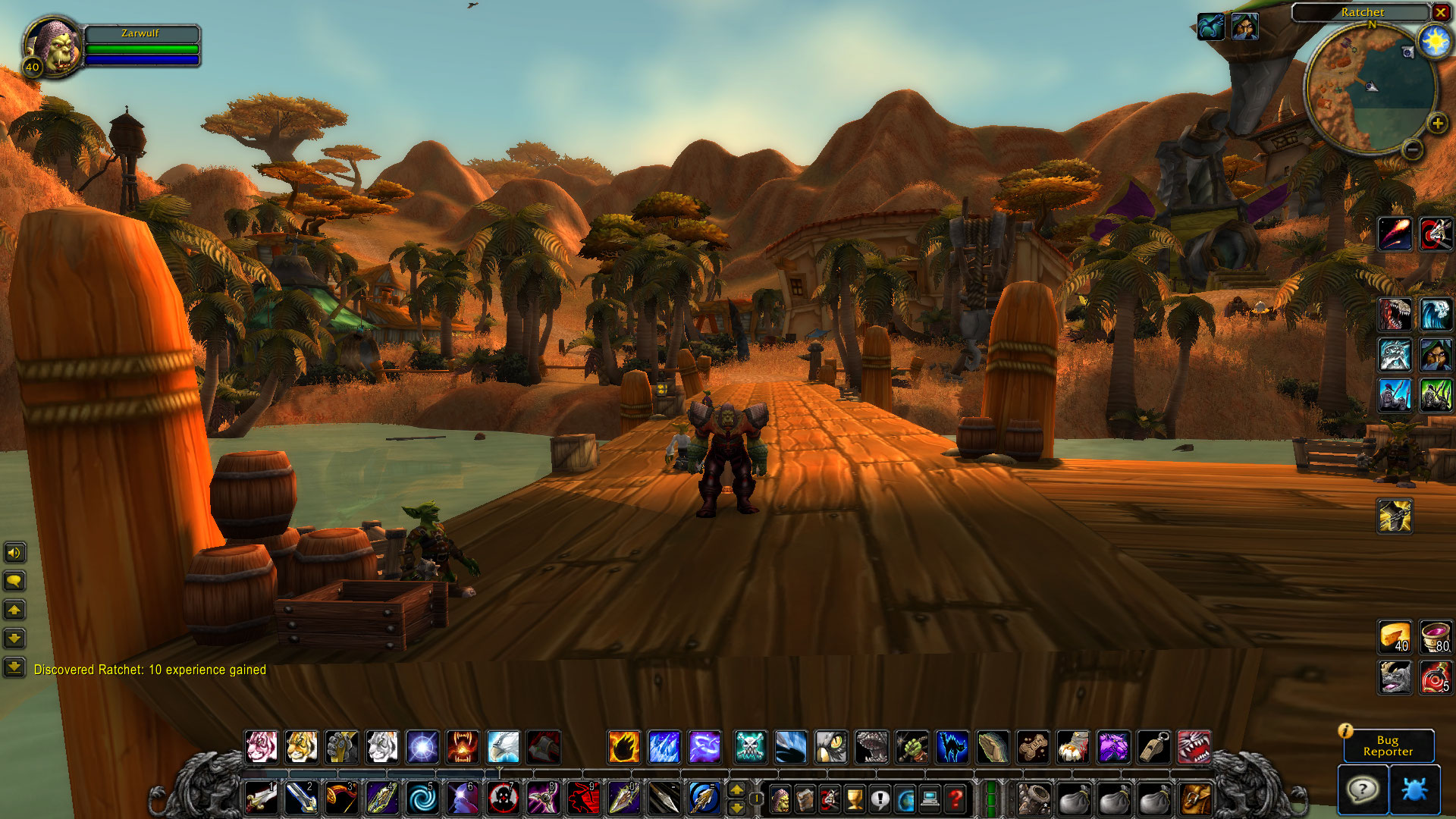
Even production director Patrick Dawson, with his encyclopedic knowledge of World of Warcraft, has forgotten a few things. Classic doesn't just recreate what you remember from the 'good old days', it reminds you about all the stuff you've forgotten. "People are going to come for the nostalgia, but they're going to stay for the rediscovery," says Dawson. "That's what's going to hook them."
Keep up to date with the most important stories and the best deals, as picked by the PC Gamer team.
I managed to reorient myself and picked up a few quests, most of them tasking me with murdering raptors. It took all my guile and panicky hotkey smashing to survive. Taking on two or more mobs is hard work, so kill quests take a geological age, and I did start to miss the breezy, done-in-a-flash modern quests. But that's just another reason to find some people and join forces. Lots of Classic can be enjoyed solo, but it's clearly not the optimal way to experience the game, and so much of this relaunch is centred around community. Old guilds and players are getting back together, and Classic would never have been developed if it wasn't for those same players clamouring for it.
Dawson, who used to lead an alliance of two guilds, says he's already had people reach out about playing again, and no conversation about the early days of World of Warcraft is complete without talking about the surprising friendships that sprung out of it. That tighter sense of community, even after it started to attract millions of players, was in large part thanks to finding groups for dungeons.
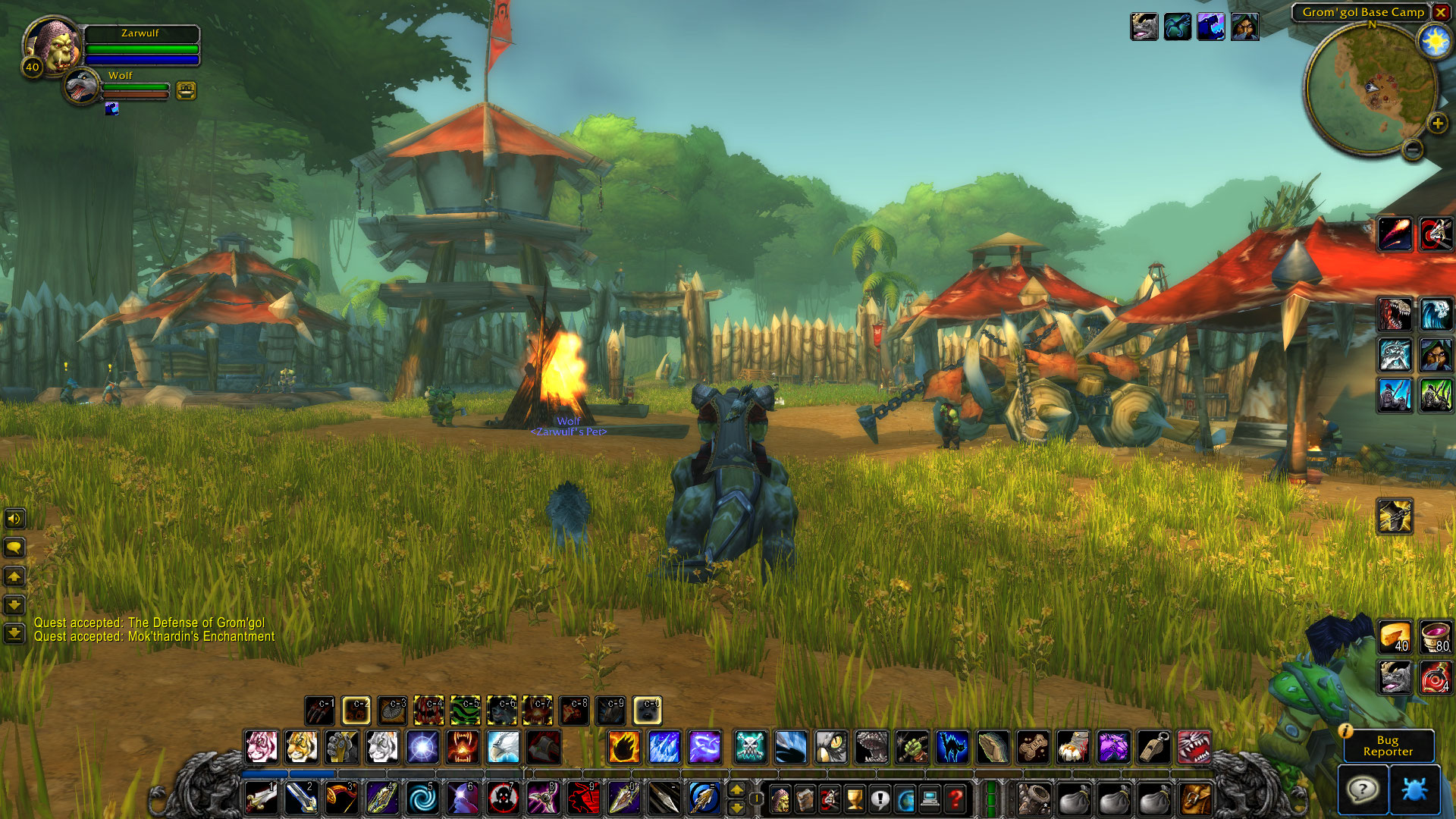
"The group forming experience was sort of organic," he says. "LF 1 more Strathholme, right? So once you've found that person and they did well and you started talking to each other there, you want to do it again. I remember recruiting so many people into my guild just by doing that, just by running dungeons and inviting them to our raids."
Before long, a group got together for a PvP brawl, trekking from all over the world for a spot of bloodletting after they settled on a place they all remembered. They chatted in-game and shouted across the hall, getting the logistics out of the way so they could get to the fighting. There might not be pet battles, rotating world quests or a dizzying array of dungeons and dungeon types, but Classic will still offer up plenty of things to do between wandering around murdering surprisingly tough animals, as long as people are looking for groups and fights.
"I think there will be a lot of people who come in and see it as an alternative or a tourism thing, who want to see what Classic is like, but what we're planning for is the people who'll stick around," says Dawson. "Three weeks, four weeks after launch, they're in there, they're getting ready for Molten Core, they're gearing up for raids, they're going to start doing world bosses when that content unlocks, and that's what we're looking to make sure we have a realm population to support. There are a lot of people who are super interested in that experience and we're committed to deliver it."
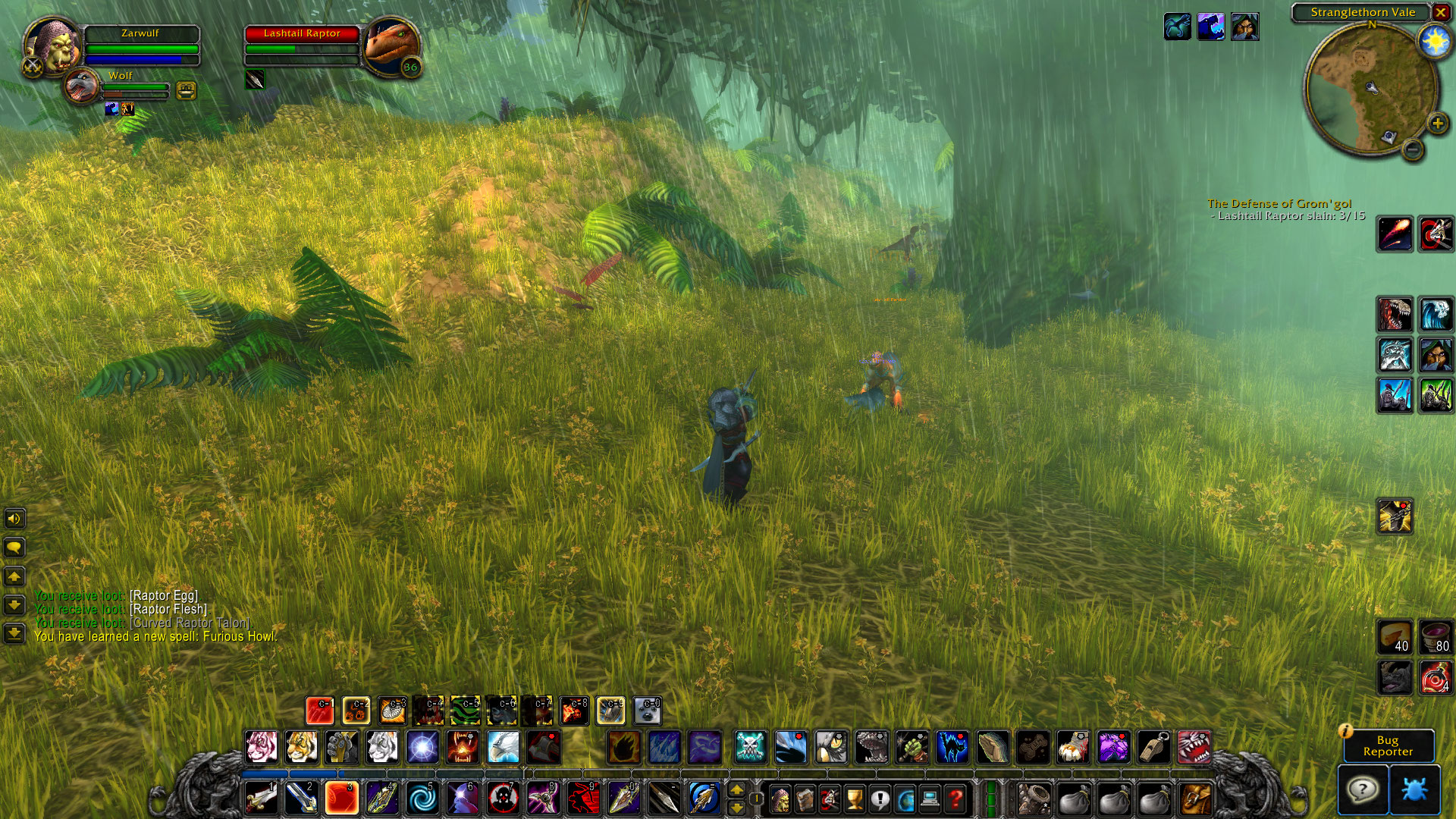
Players are going to reach the point where they're ready to raid at different times, so Blizzard's spacing out the cadence of updates. Classic will go from 1.12 to the arrival of Naxxramas and the Scourge Invasion two patches at a time, largely following the original order, though with a few exceptions.
"It's intended to unlock the raid progression content primarily, and also the battleground content," Birmingham explains. "We wanted to make sure that the power progression didn't jump immediately to the end. We wanted people to feel like there was a sense of progression for each of the raid tiers."
By spreading it out, there will be time for players to find guilds, forge (or reforge) some friendships and encase themselves in the best gear before marching into Onyxia's Lair or the other original raids. But mucking around in the jungle with my level 40 orc, preparing for the endgame seemed like a distant challenge. I was still at the odd jobs part of my heroic journey and trying to figure out a barely recognisable class.
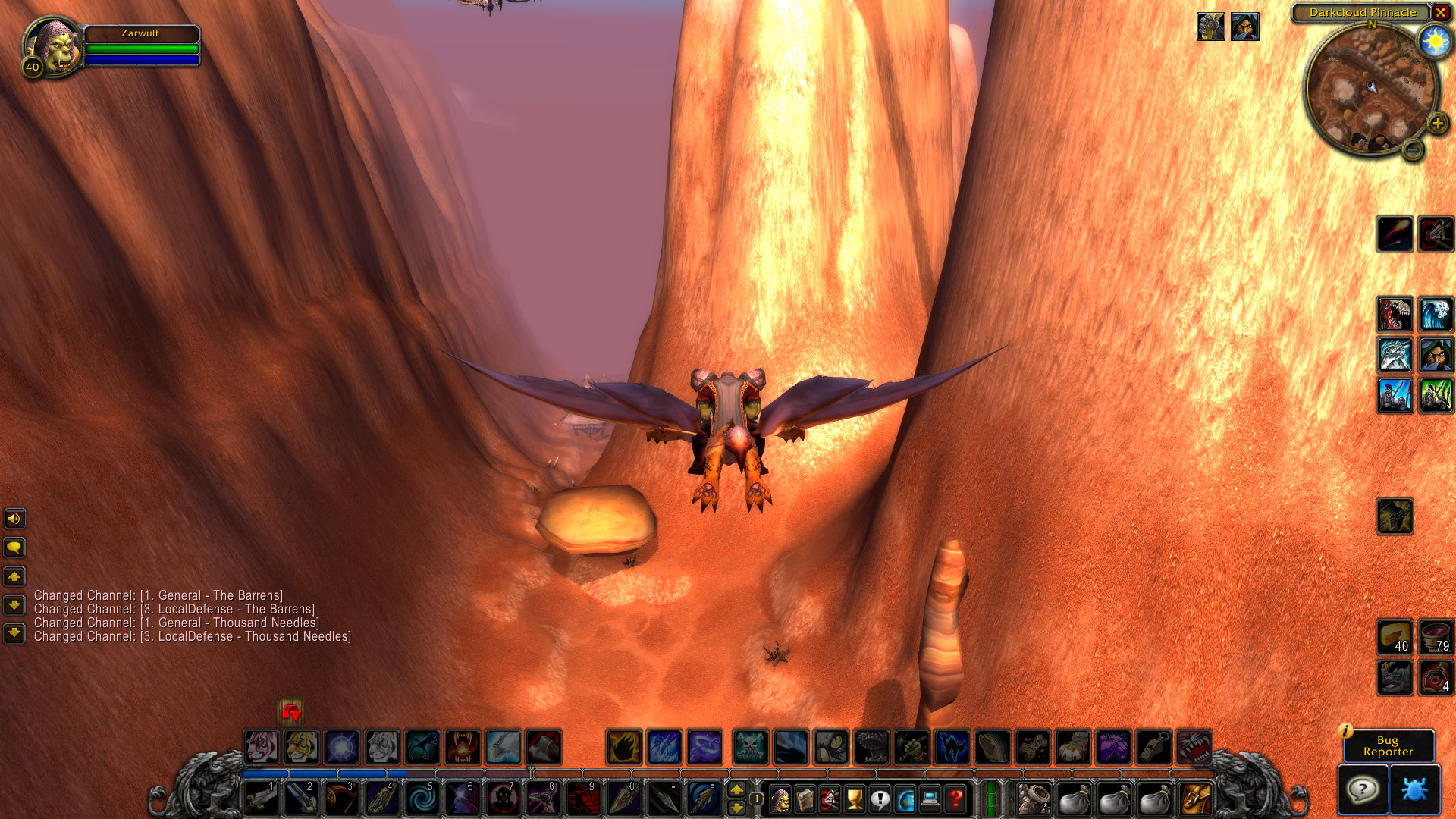
As I ran away from one raptor too many, it dawned on me that I should probably check out all the stuff crammed into my hotbars. Remember when you had lots of different tracking abilities that could only be activated one at a time? They're back! It's inconvenient and means you have lots of ultra-specific, mostly useless abilities, but there's something reassuring about how staunchly Blizzard is sticking to the way things were, and there are some benefits that come along with the little frustrations.
Building your hunter or mage or whatever you pick is considerably more involved than the modern version makes it, and messier, but it's liberating. With every point put into your talents, you might be making a terrible mistake, but that's a little bit exciting. It's all small, incremental improvements, but you're constantly getting given decisions about your build and new points to put into it. And there are so many points! And paths! With all the streamlining and class transformations, much of it welcome, World of Warcraft has lost some of its traditional RPG chops.
Even unintended stuff has made its way back in, like spell batching. Because of the way the old servers processed player actions in batches, it allowed players to polymorph each other at the same time even if in reality there was a short delay. You'll be able to do simultaneous polymorphing to your heart's content in Classic, but it had some unusual consequences when it was reintroduced.

"People asked for it, so we put it back in, and because of some additional changes we'd added to the code over the years, it actually introduced about a second and a half of loot lag," Birmingham says. "It didn't occur to us that the two things could be related. When we saw we were experiencing it, we didn't know where it was coming from, but tracked it down, we found it and we removed it again. Sometimes these systems are complicated, interrelated, and you go to fix one thing and it causes a different issue."
Meanwhile, other things that have been working as designed have been misidentified as bugs. Birmingham recalls noticing an issue with the Charge ability in an early build where it stunned the enemy instead of putting them into combat with the player, and only once the player had arrived at the enemy and auto-attacked would it retaliate. He assumed it was a bug, but comparing it to the original 1.12 behaviour, that was how it was meant to work.
That data is one of the things Blizzard has over private vanilla servers, at least one of which plans to continue after Classic launches. "I think we have a better promise of stability, and also a better promise of authenticity," Birmingham tells me. "We actually have the original data, so we can go back and look at what it was actually like. We're not trying to do it just based on memories, which can be flawed. That can be a starting point, to give you that sense of 'I remember this, I feel this, it feels right to me,' but when you get down to the nitty-gritty details, sometimes you think it was one way, but when you go and look it's actually different."

Nostalgia and our selective memories also make it easier to gloss over a game's shortcomings, but there's one place where rose-tinted glasses aren't necessary. Classic has an abundance of style and character, and I was surprised to find that even with the newer textures, character models and graphics options stripped out, the world remains lavish, eye-catching and completely resistant to the passage of time. It's an aesthetic inextricably linked to the MMO, but really it started in Warcraft.
"We do have a Warcraft style, and that's largely things are over-proportioned and colours are bright and vibrant," senior art director Samwise Didier says. "A lot of times people just say 'Well, yeah that's how games are done,' but there wasn't a lot of that before. Lord of the Rings and all the traditional medieval fantasy stuff was a bit dingy, not bright and colourful, so we sort of took that comic book colouring style from comics like Thor and all these vibrant, over the top, heroic things and applied it to our game."
The big shoulders, for instance, which feel so very World of Warcraft, were initially handy in the RTS because it made soldiers easy to identify. Now they make it easy to identify fashion criminals. The world and style's development over the course of multiple games meant it was already refined by the time World of Warcraft launched, so just like players returning to Classic, Azeroth's first denizens were already familiar with it.

"I think Warcraft, with a lot of its iterations, the art got better, the stories got deeper, the technology improved and the designers got better," Didier says. "So you had ten years of Warcraft before World of Warcraft even came out. And as soon as it came out and people started at level one, they knew exactly what was going on."
I got lost, chased by raptors, lost again in my talent trees and achieved very little, but it was a great way to waste a day. The pace and trickier one-on-one duels feel like a palate cleanser now that Battle for Azeroth lets you blow through a vast chunk of the game like an invincible demi-god. But spread out across months or years? I'm not sure I have the patience for it. Classic is a seductive prospect, but I suspect I'll just be one of the tourists.
World of Warcraft Classic will begin—all you need is a subscription to the regular game—on August 27, with a closed beta kicking off on May 15. Blizzard hasn't announced dates for the patches, nor what happens after the Scourge invasion. A lot of that will be down to the players, and right now there are no plans beyond the final vanilla update. It will exist as a snapshot of the game as it used to be. If you want it to move forward, maybe to Wrath of the Lich King, the greatest expansion of the lot, let Blizzard know.

Fraser is the UK online editor and has actually met The Internet in person. With over a decade of experience, he's been around the block a few times, serving as a freelancer, news editor and prolific reviewer. Strategy games have been a 30-year-long obsession, from tiny RTSs to sprawling political sims, and he never turns down the chance to rave about Total War or Crusader Kings. He's also been known to set up shop in the latest MMO and likes to wind down with an endlessly deep, systemic RPG. These days, when he's not editing, he can usually be found writing features that are 1,000 words too long or talking about his dog.

